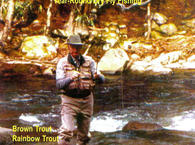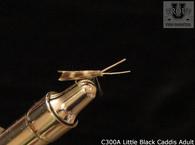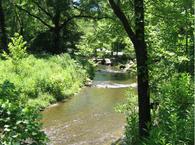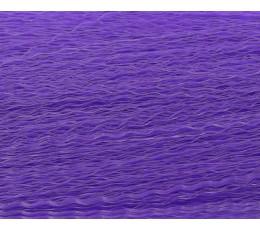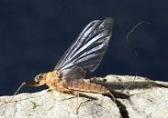
When choosing a bait, lure of fly, you obviously need to select the one that provides the best odds for success. In most situations, there is a certain bait, lure or fly that you could use that would that would provide the highest odds of success. When you are choosing a fly to use for trout, you should select one that best imitates the food that is most available and most plentiful for the trout to eat at that point in time.
The trout position themselves in the most optimal horizontal and vertical position where they can acquire the most food the easiest and fastest way. They do this for convenience but also out of necessity. In order to survive they need to spend less energy than the energy replaced by the food that they ate. They will not choose a blue winged olive over a sulphur simply because it taste better. In fact they will probably eat either one as long as it is in the same line or food channel they are feeding in.
However, that’s not usually the case since there is always one food that is more plentiful and easy for them to acquire than all other foods that are available. Identifying the correct food that the trout are eating is fairly simple if you know and understand the aquatic insects and the hatch chart for that stream.
Hatch charts are important because aquatic insects are easy for the trout to acquire when they are emerging . Nymphs are vulnerable not when they are hidden down under and between the rocks but when they are ascending to the surface to dry their wings and fly away. To the trout, eating the emerging insects is like taking candy from a baby. After they reach the surface and are trying to escape they are often more difficult for the trout to catch and eat. When mayflies fall on the water to die as spinners, they are vulnerable and when stoneflies, mayflies or caddisflies are laying eggs on the surface, they also become vulnerable.
Knowing what insects are hatching, and the stage of the hatch is important in selecting the correct fly. This knowledge makes you more productive than trial and error fly selection.When choosing a bait, lure of fly, you obviously need to select the one that provides the best odds for success. In most situations, there is a certain bait, lure or fly that you could use that would that would provide the highest odds of success. When you are choosing a fly to use for trout, you should select one that best imitates the food that is most available and most plentiful for the trout to eat at that point in time.
The trout position themselves in the most optimal horizontal and vertical position where they can acquire the most food the easiest and fastest way. They do this for convenience but also out of necessity. In order to survive they need to spend less energy than the energy replaced by the food that they ate. They will not choose a blue winged olive over a sulphur simply because it taste better. In fact they will probably eat either one as long as it is in the same line or food channel they are feeding in.
However, that’s not usually the case since there is always one food that is more plentiful and easy for them to acquire than all other foods that are available. Identifying the correct food that the trout are eating is fairly simple if you know and understand the aquatic insects and the hatch chart for that stream.
Hatch charts are important because aquatic insects are easy for the trout to acquire when they are emerging . Nymphs are vulnerable not when they are hidden down under and between the rocks but when they are ascending to the surface to dry their wings and fly away. To the trout, eating the emerging insects is like taking candy from a baby. After they reach the surface and are trying to escape they are often more difficult for the trout to catch and eat. When mayflies fall on the water to die as spinners, they are vulnerable and when stoneflies, mayflies or caddisflies are laying eggs on the surface, they also become vulnerable.
Knowing what insects are hatching, and the stage of the hatch is important in selecting the correct fly. This knowledge makes you more productive than trial and error fly selection. For the flies that perfectly imitate the actual aquatic insects please go to TroutProStpre.


